Hiking alone as a woman? Get practical tips, personal insights and safety advice to hit the trail with confidence, even if you’re not a pro.
Why I started solo hiking
Hiking alone as a woman: for me, it actually started by accident. I was in the U.S. and had planned to hike in Capitol Reef National Park, but my travel buddy got sick. I decided to go anyway, even though it felt a bit uncomfortable. The Fremont River Trail was only about three kilometers (just under two miles), but I still found it quite nerve-wracking.
Nature in the U.S. felt much wilder than what I was used to back home in the Netherlands. I honestly thought there might be a rattlesnake or mountain lion hiding behind every rock. That turned out not to be the case. And once I reached the viewpoint, a sense of freedom took over. The silence, the steady rhythm of my steps, being alone without feeling lonely: I loved it.
Back in the Netherlands, I started going on solo hikes more often. I lived in Amsterdam at the time and used to take the train on Saturday mornings to escape the city. I’d head to the dunes and beach near Zandvoort or the forests around Amersfoort. Just me, a backpack with some snacks and water, and no obligations. I didn’t even wear headphones. I simply listened to birdsong and the sound of leaves rustling underfoot.
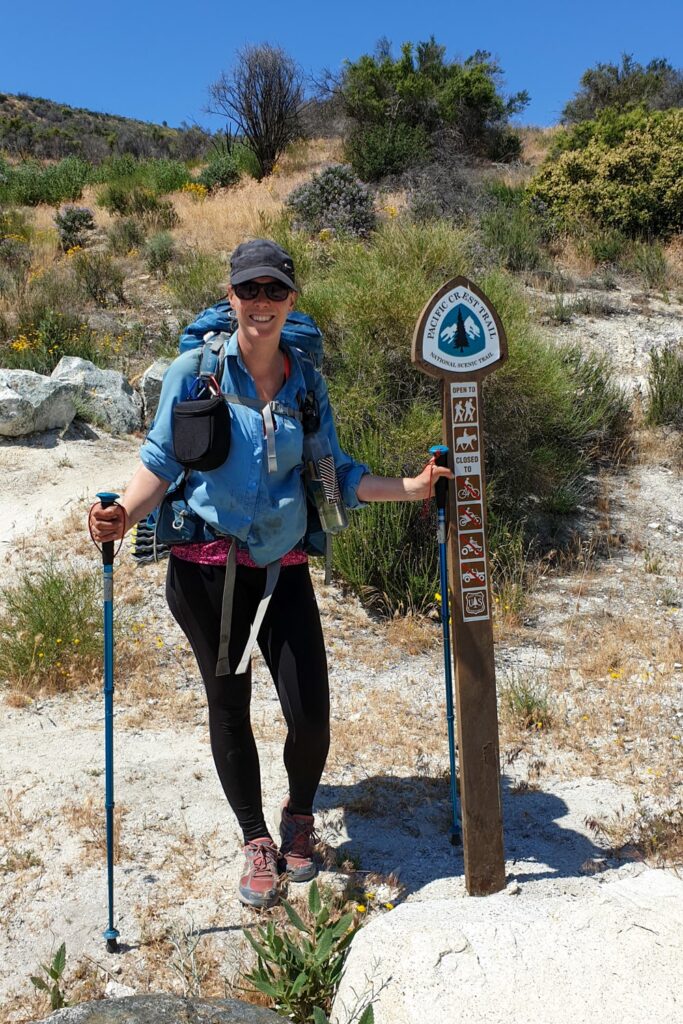
Over time, my hikes became longer and more adventurous. I’ve hiked over 440 miles (700 kilometers) of the Pacific Crest Trail, and later completed the full Pieterpad (the most popular long-distance trail in the Netherlands) and the Arizona Trail. All of them solo.
Almost every week someone says to me, “I can’t believe you do that alone!” And yes, it can feel scary sometimes. But it’s also one of the most rewarding things I’ve ever done. In this article, I’ll share what I’ve learned from solo hiking, how I prepare for it, and what it might bring you, especially as a woman.
What makes walking alone as a woman exciting
Hiking alone might sound brave or even glamorous, but let’s be honest: it can also feel pretty scary. Especially when you’re just starting out. You step into an unfamiliar environment without anyone by your side. And while that gives you a huge sense of freedom, it also raises questions.
What if you get lost? What if something happens and there’s no phone signal? What if you have an awkward encounter with someone on the trail? Or come face-to-face with a wild animal? There are plenty of reasons why women might feel unsafe while hiking solo. And honestly? That feeling isn’t always unjustified.
Then there are the reactions from others. “I can’t believe you do that alone!” or “Isn’t that dangerous?” I hear those comments almost every week. They’re usually well-meaning, but they can still make you doubt yourself. Am I being reckless? Am I naive? But in reality, most solo hikes aren’t scary at all. In fact, they often bring peace of mind, pride, and a deep sense of freedom.

For women, solo hiking often feels different than it does for men. That’s not necessarily about physical strength or outdoor experience. It has more to do with what we’ve learned growing up. Many of us were taught to be careful, to stay alert, to avoid certain places or times of day. And that’s not just paranoia: two out of three young women in the Netherlands experience street harassment at some point (source).
Catcalling, being followed, someone ignoring your boundaries. Almost every woman has experienced some version of this. I still run into it regularly, especially in cities. On hiking trails it’s much rarer, but not completely absent. The worst experience I had was in Jordan. I was hiking alone and got followed by a man who tried to kiss me. I felt really unsafe and ended up tapping him with my trekking pole. He left immediately after that. It was an upsetting moment, but also an exception. In all my years of solo hiking, this kind of situation has been rare.
Rationally, the chances of something going wrong on a hike are low. But that doesn’t erase the deeper feeling of insecurity. It’s not an irrational fear. It’s lived experience. And that deserves to be acknowledged. At the same time, I don’t want to discourage you. Hiking alone can be safe. If you’re well prepared, listen to your gut, and take your own feelings seriously, you’ll be just fine.
And finally, there’s that mental barrier. The idea that you need to be brave, or fully prepared, before you’re allowed to do something like this. But the truth is: you don’t need to be fearless or super experienced to start. You just need the courage to try it once.
Safely hiking alone as a woman: 6 practical tips
You really don’t have to be a survival expert to hike solo safely. A little preparation goes a long way in helping you feel more confident on the trail. These are my top tips, all based on personal experience.
Choose a route that suits you
You don’t have to start with the Camino or the Pacific Crest Trail. Begin with something simple and well-marked. Think of a short day hike in a national park, a popular nature reserve, or any trail where you know you won’t be completely alone.
Once you’ve done a few of those, solo hiking starts to feel more natural, and even fun! That’s when you might feel ready to try something a bit more remote or adventurous.
Let someone know where you are
Especially if you’re heading out for a longer or more remote hike, make sure to share your route and estimated return time with someone you trust. And check in once you’re back safely.
If you’re going off the grid, consider using a GPS tracker or an app that shares your location in real time. On the Arizona Trail, for example, I carried a PLB (Personal Locator Beacon). It sent out my location every ten minutes via satellite, so my family (and anyone else with the link) could follow my progress. I also gave them paper maps of the trail. My dad actually kept track of exactly where I was each day.
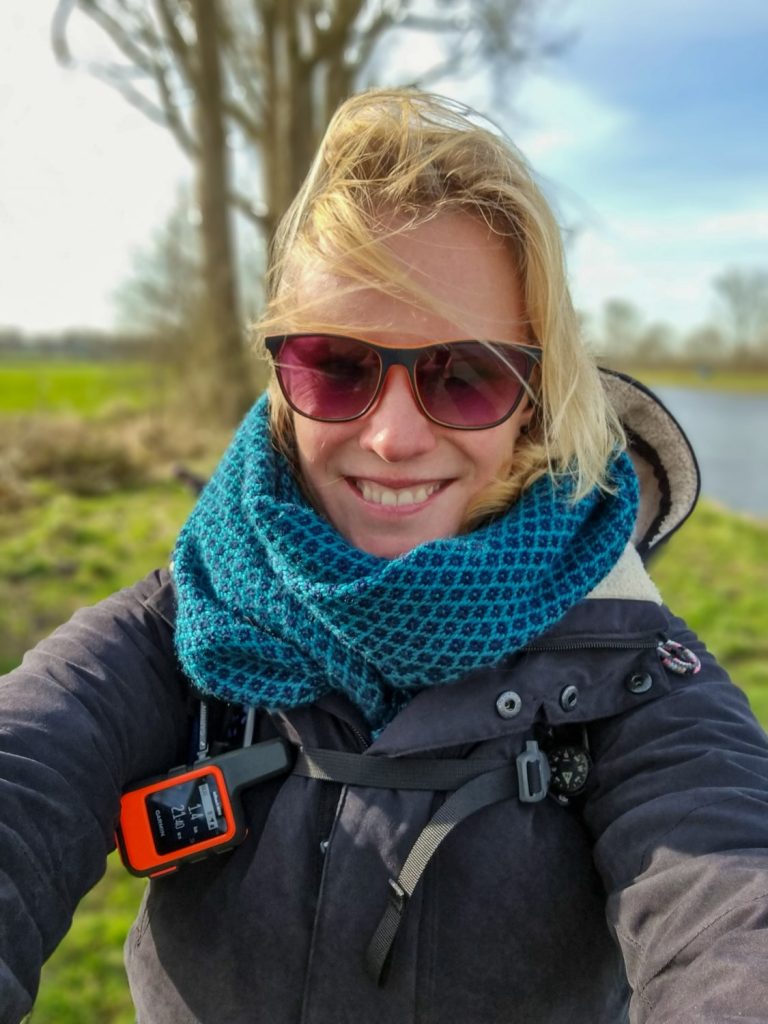
Pack a light but complete kit
You don’t need to carry your entire house on your back, but a few essentials make a big difference. Think of a fully charged phone (plus a power bank), a paper map or an offline GPS app like Komoot or Gaia GPS, plenty of water and snacks, sunscreen, Band-Aids and maybe a small first aid kit.
Also check if your backpack has a built-in whistle. Many backpacks have one, often hidden in the chest strap buckle. If yours doesn’t, it’s smart to bring a separate emergency whistle, just in case.
Trust your gut
If something doesn’t feel right (a deserted trail, someone asking a few too many questions, rustling in the bushes), just change your plan. You don’t owe anyone an explanation. Your instincts come first, always.
Be kind, but set boundaries
Most people you meet on the trail are just friendly or curious. Still, you don’t have to engage with everyone. It’s totally fine to keep your distance, give short answers or even tell a little white lie if that helps you feel more comfortable.
I’ve sometimes said my boyfriend or fiancé is just up ahead. In reality, I was hiking solo.
Know what to do if you encounter animals
This is what usually makes people nervous when I say I hike alone in the US or Canada. The thought of wild animals. And yes, there’s a chance you’ll come across one. Even in the Netherlands, wild boars or wolves are possible (though I’ve never seen either).
If you’re heading into areas with wildlife, it’s smart to learn what to do in advance. For example, rattlesnakes usually give a warning by rattling, and they can’t strike further than half their body length. So if you keep your distance, you’re fine.
With black bears, the key is to make yourself look big and make a lot of noise. I’ve come across both animals multiple times. So far, they’ve always walked away on their own.
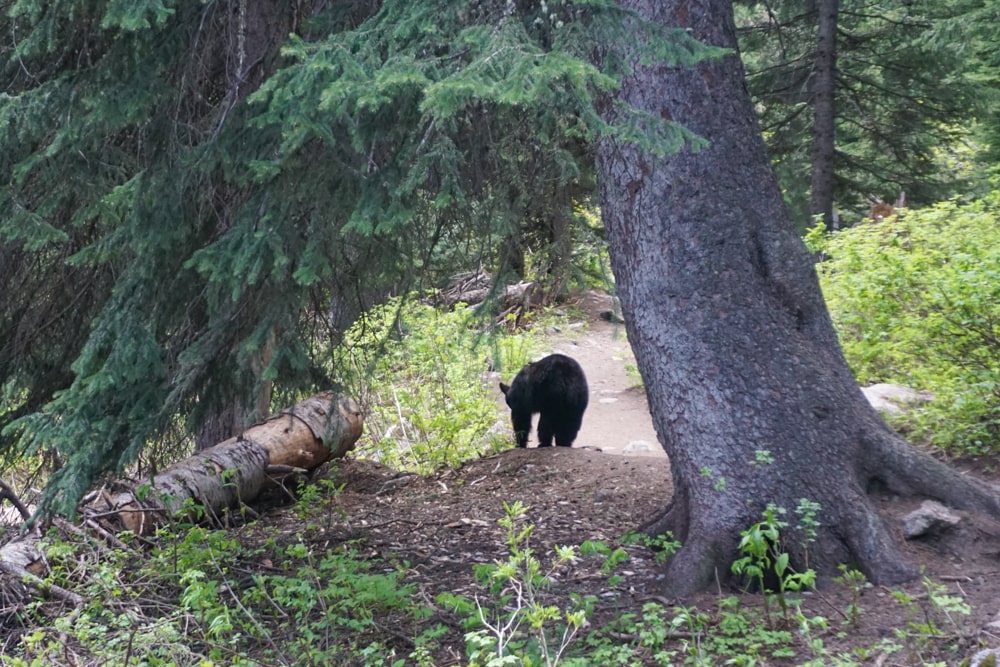

Of course, these are more extreme situations. What I really want you to know is this: solo hiking is not a competition. It’s not about doing the longest or hardest trail. It’s about feeling comfortable with what you’re doing. With a bit of preparation and realistic expectations, you’ll be surprised how far you can go.
Why hiking alone is so valuable
The freedom of hiking alone isn’t just about choosing your own route. It’s also about letting go. There’s no need to keep a conversation going, no compromises to make, and no rush to be anywhere.
Especially if your mind feels busy, life is hectic, or you’re constantly taking others into account, it’s incredibly refreshing to just do nothing for a while. You set your own pace, take breaks whenever you want, and follow detours simply because they look inviting. That’s what makes solo hiking a true form of self-care.
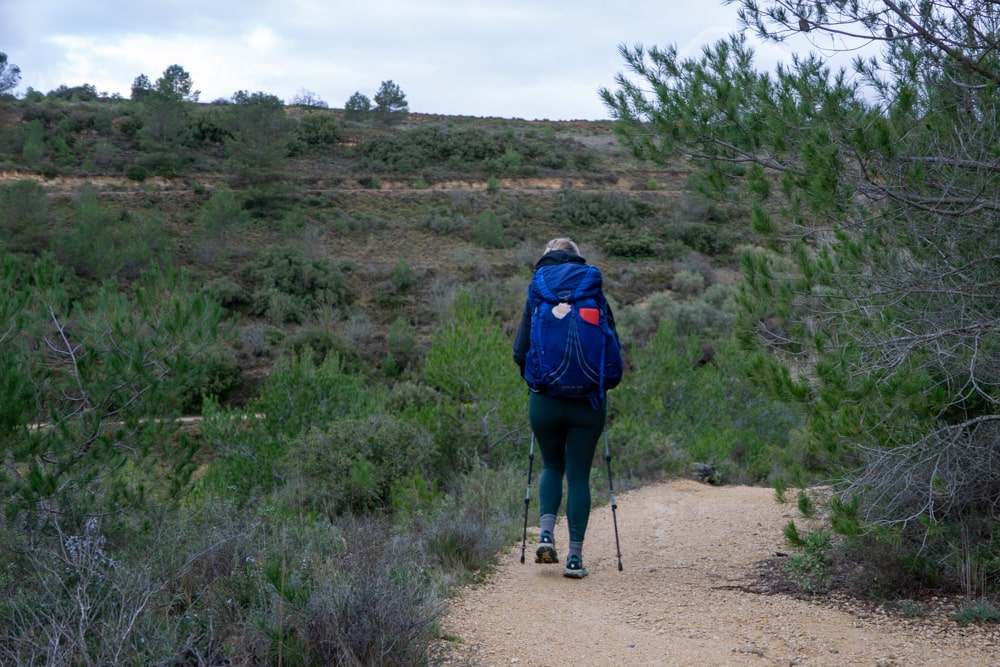
I find that during solo hikes I’m more in touch with what’s going on in my head. I breathe more calmly, notice my surroundings more deeply, and make decisions without factoring in what others might think. Walking naturally becomes a kind of meditative ritual.
And yes, sometimes I do feel a bit insecure along the way. I remember that one time I was startled by a group of off-leash dogs. But the feeling that sticks with me most is pride. That I did it. On my own. So don’t let those doubts stop you, you’re probably capable of more than you think.
More hiking tips
Want to get into hiking more and looking for tips, inspiration, or just a little motivation? These books are a great place to start:
“Wild” by Cheryl Strayed – A raw, honest memoir about solo hiking the Pacific Crest Trail. Not just about the trail, but about finding strength and healing along the way.
“She Explores” by Gale Straub – A beautiful collection of stories, interviews and advice from women on the trail, covering everything from identity to adventure.
Over the years, I’ve picked up a lot of experience with hiking, and I love sharing what I’ve learned. On this website, you’ll also find:
- Best snacks for hiking: 20 tasty ideas from my own trail experience
- Tips for hiking in the rain (and why it’s not as bad as you think)
- 24 fun and interesting facts about hiking
Want more hiking tips, personal stories and inspiration in your inbox? Sign up for my newsletter and don’t miss a thing!
Thanks for reading this far! Keeping this website up and running takes time and money, so if you found this article helpful, I’d really appreciate it if you consider booking or buying something through one of the affiliate links I’ve included. It won’t cost you anything extra, but it helps me keep sharing free content. Read more about how to support this site.

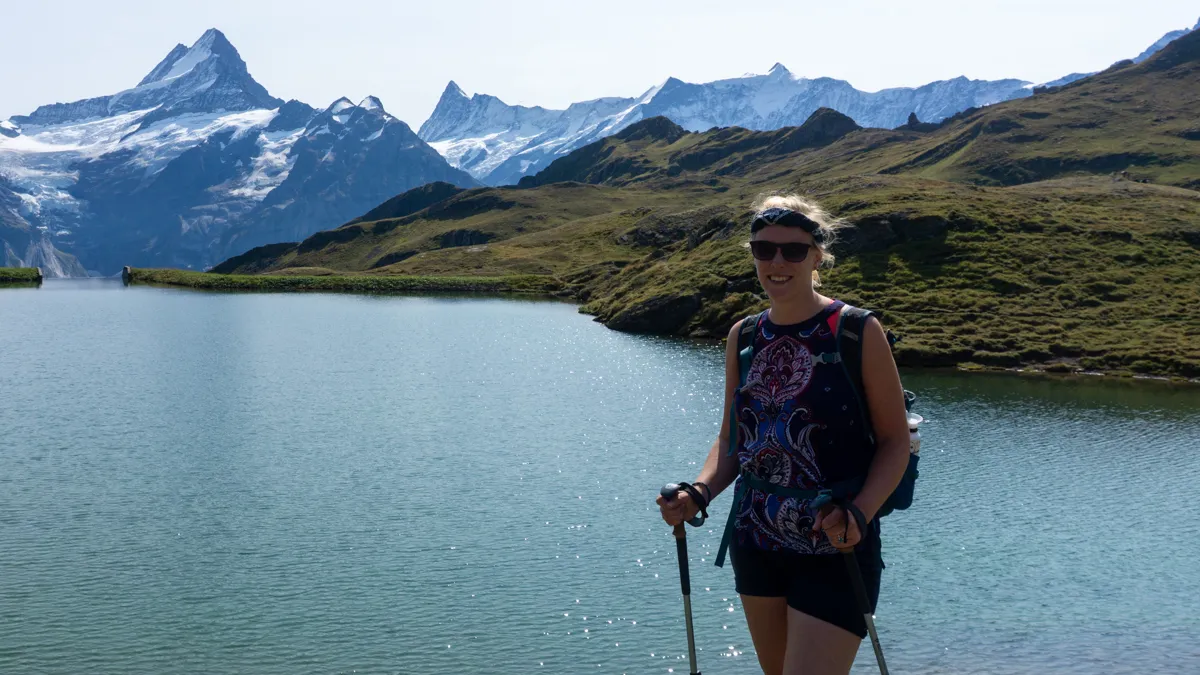



Leave a reply